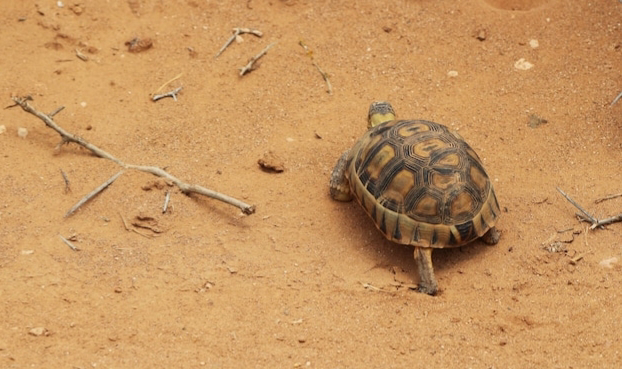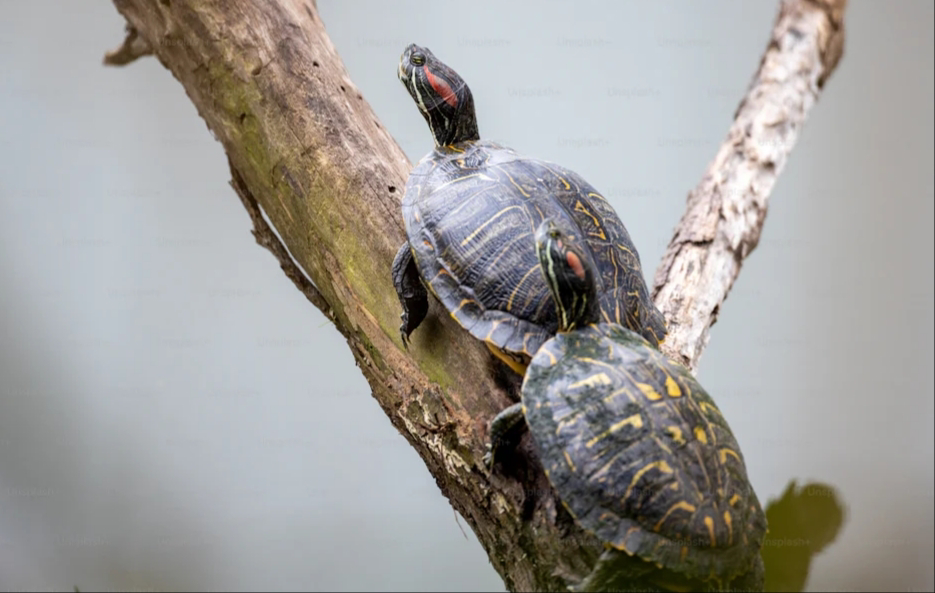Turtles are among the oldest living creatures on Earth, with ancestors dating back more than 220 million years. Known for their hard shells and slow-moving nature, these reptiles hold many remarkable secrets that make them fascinating. From the tiny, 4-inch-long speckled padloper to the massive, 8-foot-long leatherback sea turtle, these incredible creatures have evolved to thrive in diverse environments around the world. Here are
15 astonishing facts about turtles that highlight their uniqueness.
1. TURTLES ARE ANCIENT SURVIVORS
Turtles have been on earth since the Triassic period, which dates back to around 220-245 million years ago, making them one of the oldest surviving reptiles. They outlasted the dinosaurs, showing incredible resilience throughout Earth's changing environments. From the driest deserts to the deepest oceans, turtles have adapted to survive in diverse ecosystems.
2. THEIR SHELLS ARE PART OF THEIR SKELETON
A turtle's shell is not just an external shield; it's an integral part of its body. This shell is made up of two parts (carapace and plastron). It serves as both armor and a protective barrier against predators. The shell of a turtle can withstand incredible forces. Some species, like the snapping turtle, have shells that can resist forces of up to 1,000 pounds per square inch (psi).
3. TURTLES CAN LIVE FOR OVER 100 YEARS
Some species of turtles, such as the Galápagos tortoises, have life spans that can exceed 100 years. The secret to their longevity is still a subject of scientific study, but it is believed to be linked to their slow metabolism and low-stress lifestyle. Many turtle species have large eyes that are adapted to see in low-light conditions. This allows them to forage for food and navigate their environments at night.
4. THEY CAN BREATHE THROUGH THEIR BUTTS
Some turtles can extract oxygen from the water using their cloaca, which is a multipurpose opening near the anus. This ability, known as "cloacal respiration," allows turtles to stay submerged for long periods of time without needing to surface for air. While turtles are air-breathing reptiles, they are also capable of holding their breath for extended periods. Some species, such as the spurred tortoise (Geochelone sulcata), can hold their breath for up to 5 hours while they are dormant or hiding from predators.
5. THEY CAN CRY SALTWATER
Sea turtles have special glands near their eyes that allow them to expel excess salt, making it look like they are crying. This helps them stay hydrated in salty ocean environments.
6. THE LEATHERBACK TURTLE CAN DIVE DEEPER THAN WHALES
The leatherback sea turtle can dive more than 4,000 feet (1,200 meters) deep, deeper than most whales, thanks to its flexible shell and special blood adaptations.
7. TURTLES CAN SURVIVE WITHOUT THEIR BRAINS FOR A WHILE
A turtle's body can still move and react for hours or even days after losing its brain due to the way its nervous system is structured.
8. SOME TURTLES CAN HOLD THEIR BREATH FOR OVER 10 HOURS
During sleep or extreme cold, some turtles can hold their breath underwater for 10 hours or more by slowing down their heartbeat.
9. SURVIVE WITHOUT THEIR BRAIN
A turtle can survive without its brain for a while due to its unique nervous system and slow metabolism. Here’s how:
Reflexive Nervous System
Unlike mammals, turtles have a highly decentralized nervous system, meaning their spinal cord and nerves can still send signals even if the brain is damaged or removed. This allows their body to react and move for hours or even days.
Low Oxygen Demand
Turtles have a very slow metabolism, especially in cold environments. Their organs can function on minimal oxygen, allowing them to "survive" for a period without full brain activity.
Brainstem Independence
Even if the main brain is damaged, the brainstem and spinal cord can still control basic functions like movement and reflexes for some time.
Evolutionary Adaptations
Since turtles evolved to survive extreme conditions (such as underwater hibernation for months), their bodies can keep functioning with minimal brain activity until they completely shut down.
Real-Life Example: The Snapping Turtle
Snapping turtles are known for continuing to move even after their heads are removed due to their nerve activity. Some have even been observed biting reflexively hours later!
While a turtle cannot truly "live" without a brain, its body can continue functioning for a surprising amount of time due to these remarkable adaptations.
10. SLOW METABOLISM
Turtles are known for their slow-moving lifestyle, and this is reflected in their metabolism. Their heart rate can slow down to as little as 1 beat per minute when they are in a resting state, contributing to their slow growth and long life span. While turtles are not exactly speed demons, they can move quickly when they need to. Some species, such as the spurred tortoise, can reach speeds of up to 15 miles per hour (24 km/h).
11. FEEL THROUGH THEIR SHELLS
While a turtle’s shell may seem like a tough barrier, it’s packed with nerve endings. This allows them to sense pressure, touch, and even pain, making their shells more than just a passive defense mechanism. Turtles have sensory receptors called "mechanoreceptors" in their shell, which allow them to detect vibrations, pressure, and temperature changes.
12. SPECIALIZED JAWS
Instead of teeth, turtles have sharp, beak-like jaws that help them eat. Sea turtles, for example, have specialized jaws for eating jellyfish, while tortoises might use their beaks to chew tough plants. The jaws of turtles are edged with a hard, keratinized layer that helps them to cut and tear food. Sea turtles have a specialized jaw that allows them to eat seaweed, seagrass, and other marine plants.
13. REGROW PARTS OF THEIR TAILS
Many species of turtles have the ability to regrow parts of their tail, a process called "epimorphic regeneration" or "caudal autotomy." While turtles are not capable of full regeneration like some reptiles, certain species, like the red-eared slider, can regenerate parts of their tails if injured. This ability to regrow tissue helps them recover from minor injuries. Some turtles can self-amputate their tails as a defense mechanism to distract predators and escape.
14. GENDER OF THEIR BABY TURTLES DEPENDS ON TEMPERATURE
In many turtle species, the temperature of the environment determines whether a turtle hatchling will be male or female. This phenomenon, known as temperature-dependent sex determination (TSD), means that cooler temperatures tend to produce more males, while warmer ones create more females.
15. SEA TURTLES HAVE POWERFUL SWIM BLADDERS
Sea turtles have specially adapted bladders that allow them to remain neutrally buoyant, which makes them exceptional swimmers. These bladders help them conserve energy while swimming long distances across oceans.










0 Comments